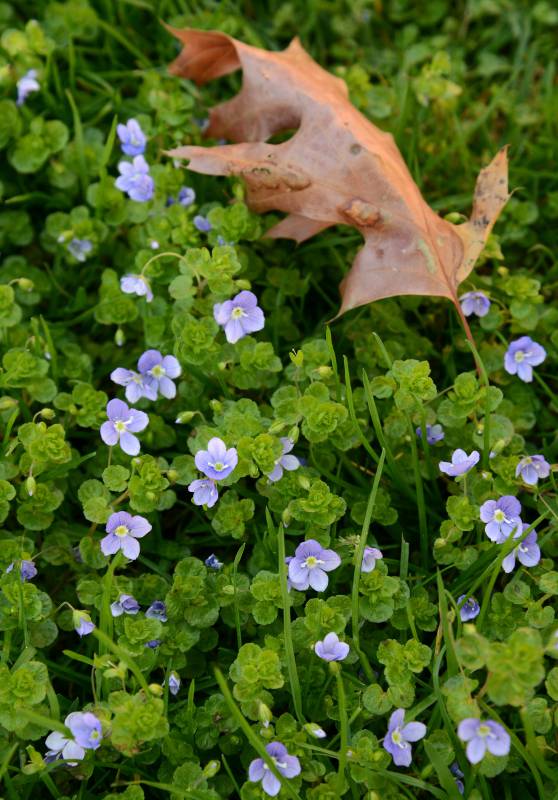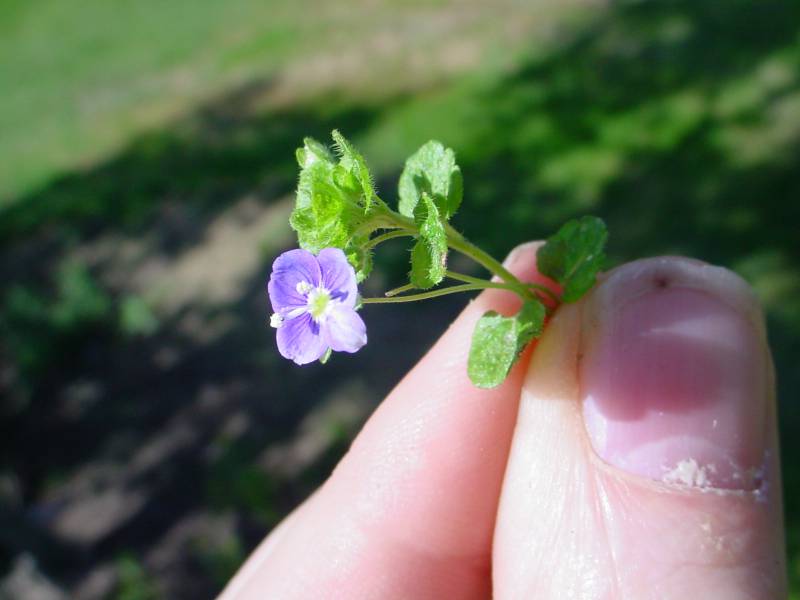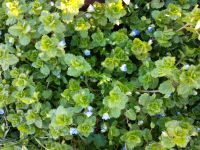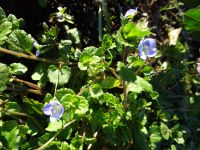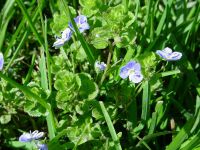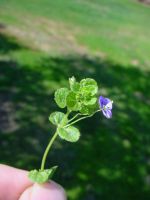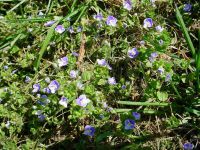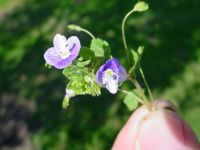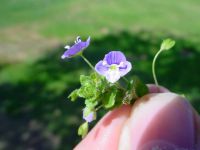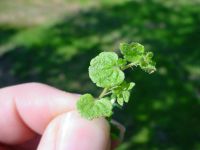Distribution: Occurring west of the Cascades crest in Washington; British Columbia to California, east to Montana, also in eastern North America.
Habitat: Weed of lawns and gardens
Flowers: April-June
Origin: Introduced from Eurasia
Growth Duration: Perennial
Conservation Status: Not of concern
Pollination: Bees, flies
Mat-forming perennial, the stems 1-4 dm. long, lax, simple or branched below, loosely ascending, often rooting at the lower nodes.
Principal leaves opposite, short-petiolate, the blade broadly elliptic to nearly orbicular, cordate based, with short, broad teeth, 1-2 cm. long and three-fourths or more as wide.
Flowers single on long pedicels (up to 6 cm. in fruit) along an elongate stem, each subtended by a leaf-like, alternate bract, which are reduced upward; sepals 4, prominent, often veiny; corolla bluish-lavender, 5-11 mm. wide, rotate, 4-lobed; the upper lobe the largest; style 1.5-2.5 mm. long; stamens 2.
Capsule 5-9 mm. wide and 3-5 mm. high.
Publication: Trans. Linn. Soc. London 1: 195. 1791.
PNW Herbaria: Specimen records of Veronica filiformis in the Consortium of Pacific Northwest Herbaria database
WA Flora Checklist: Veronica filiformis checklist entry
OregonFlora: Veronica filiformis information
E-Flora BC: Veronica filiformis atlas page
CalPhotos: Veronica filiformis photos

